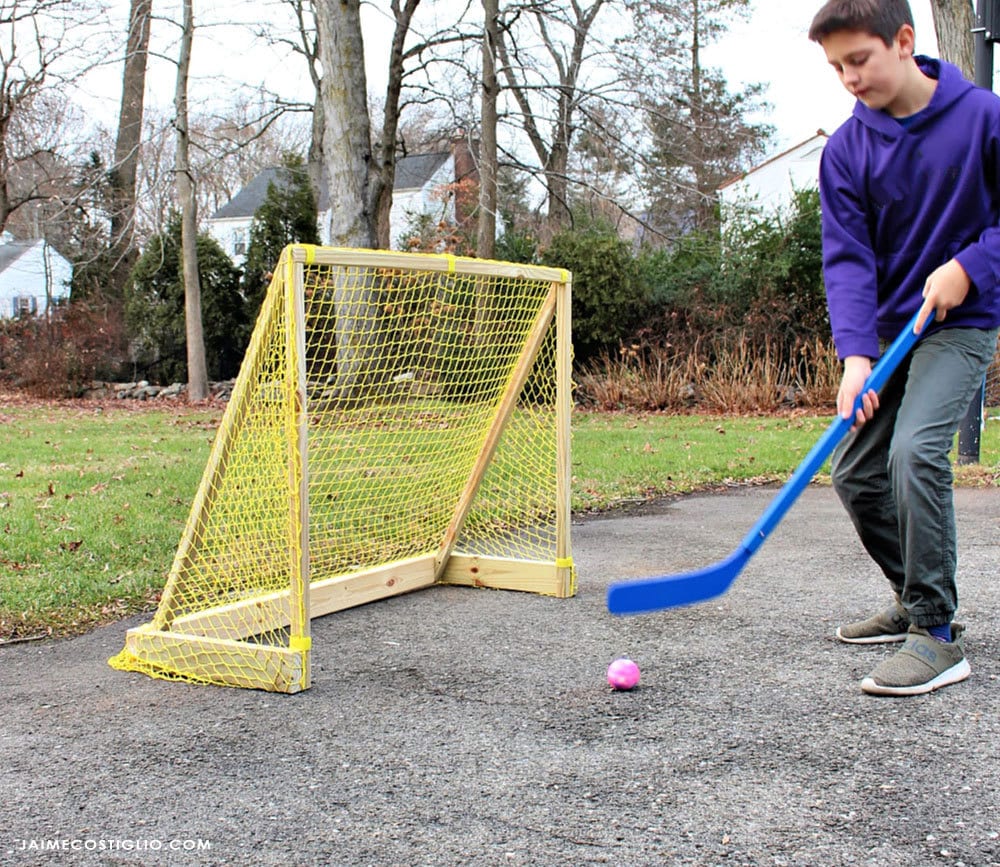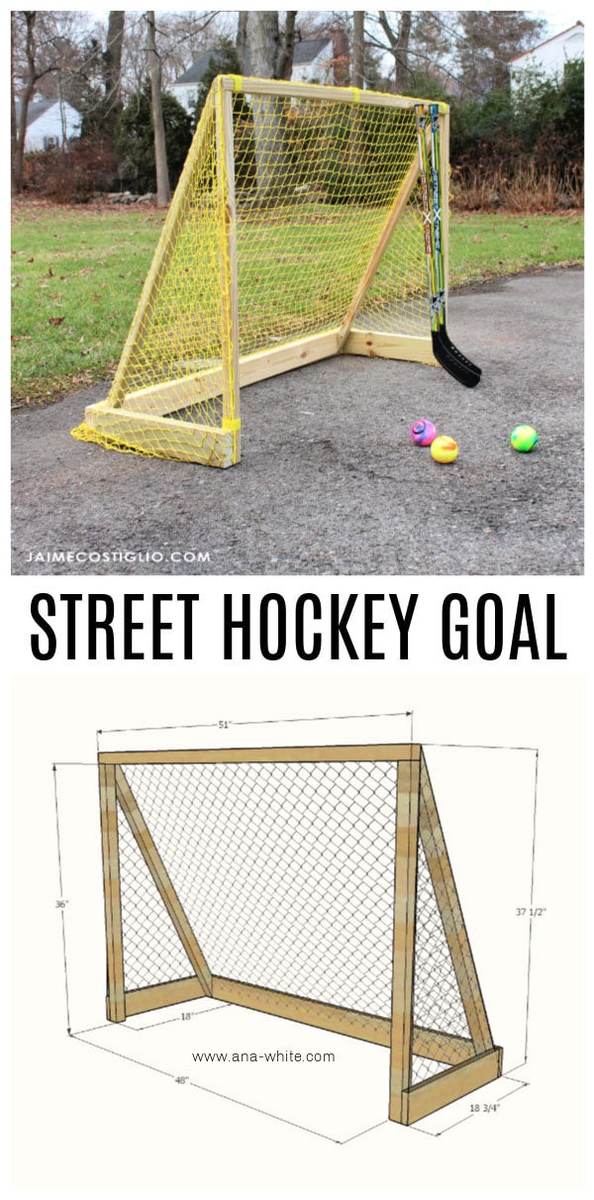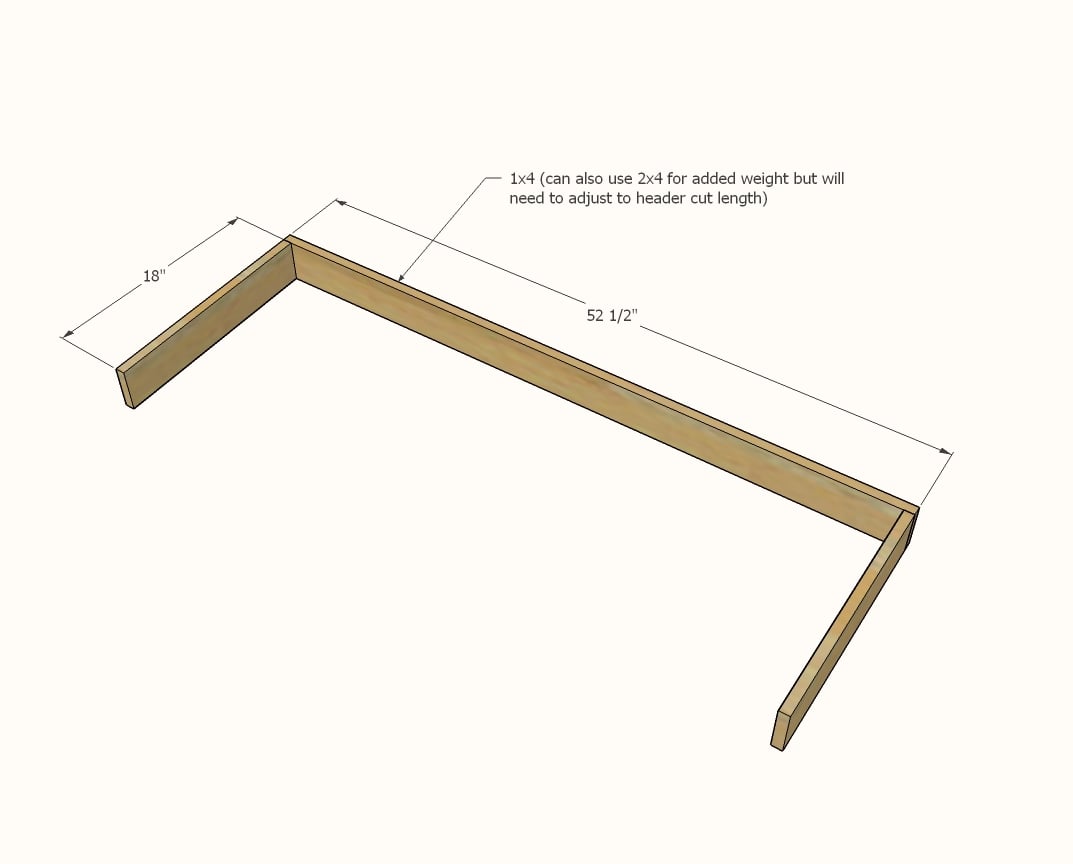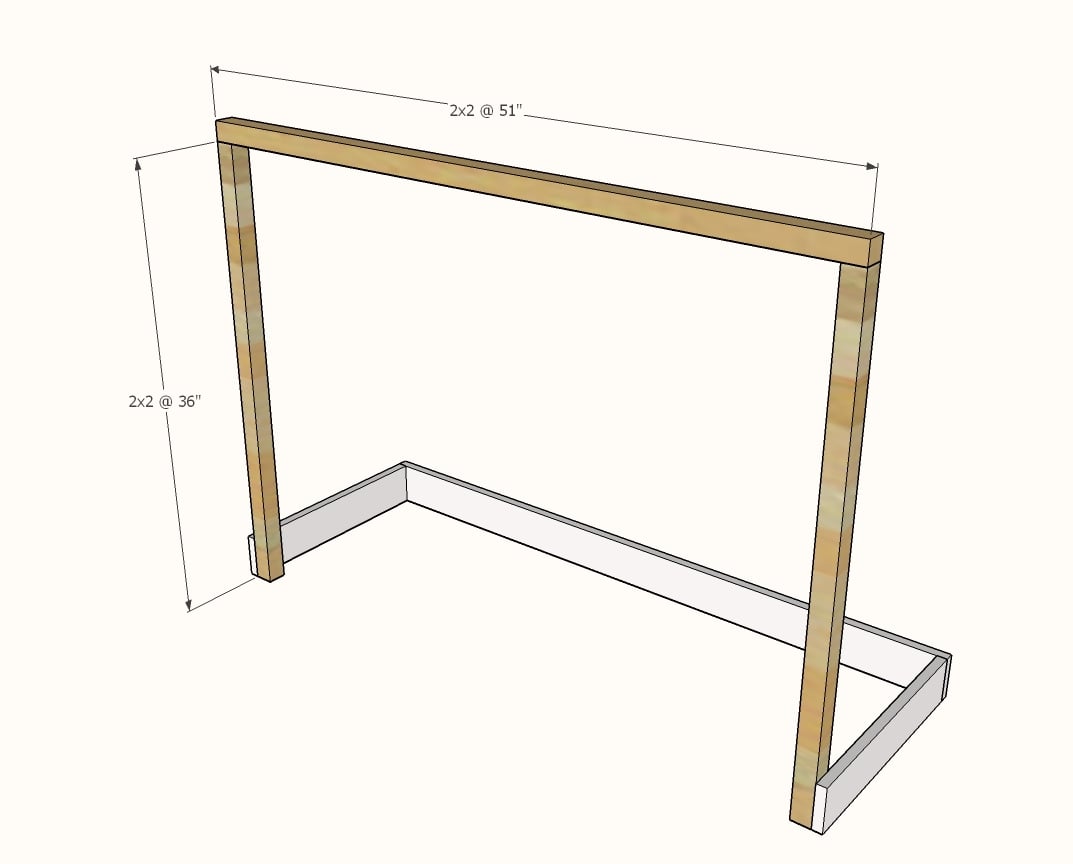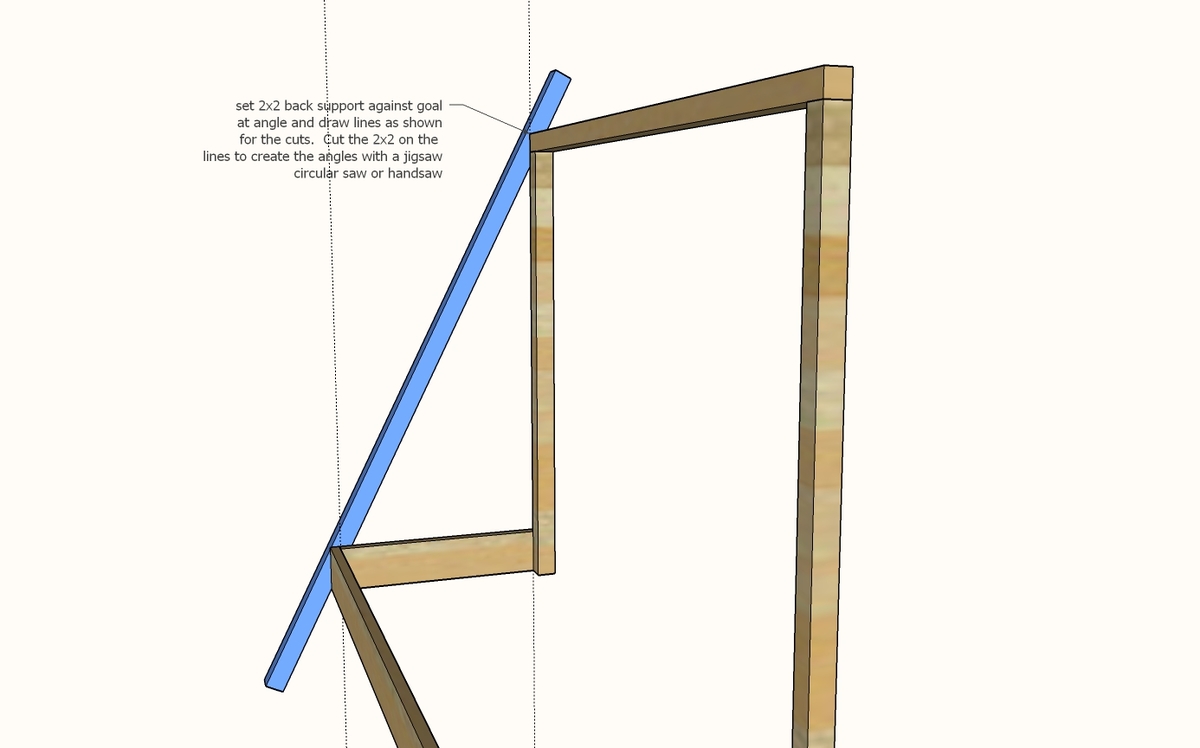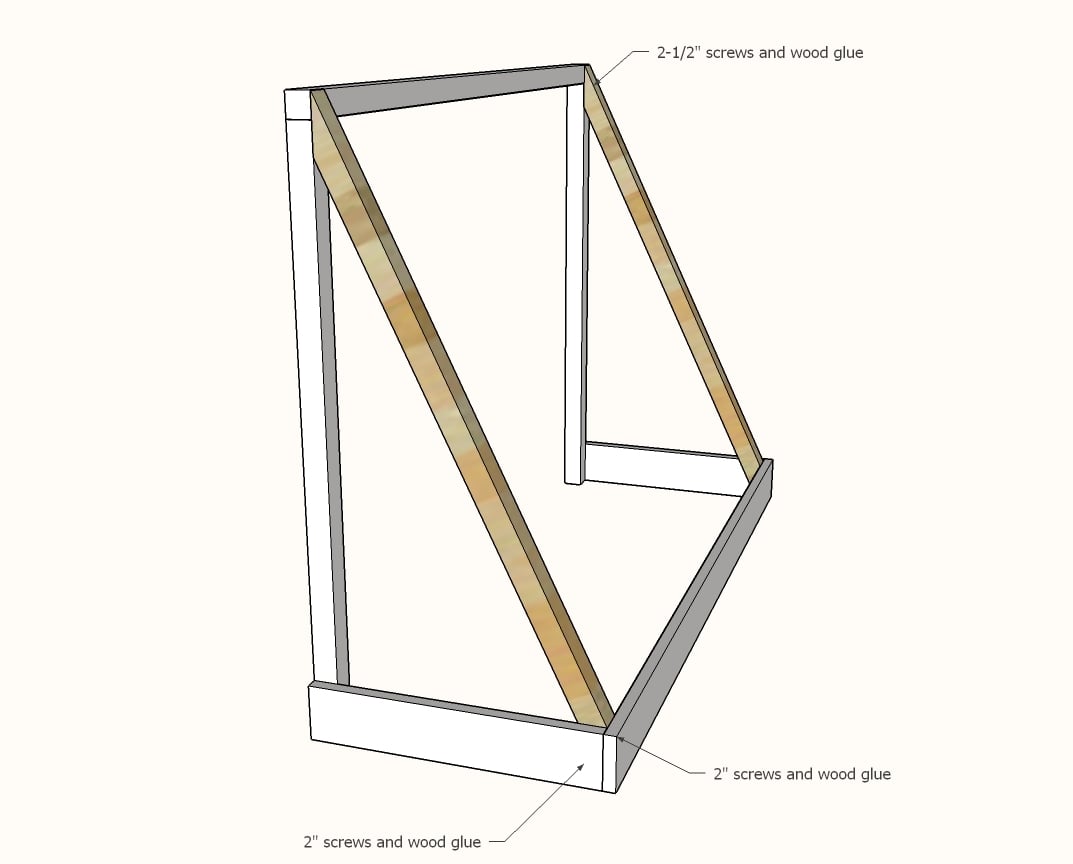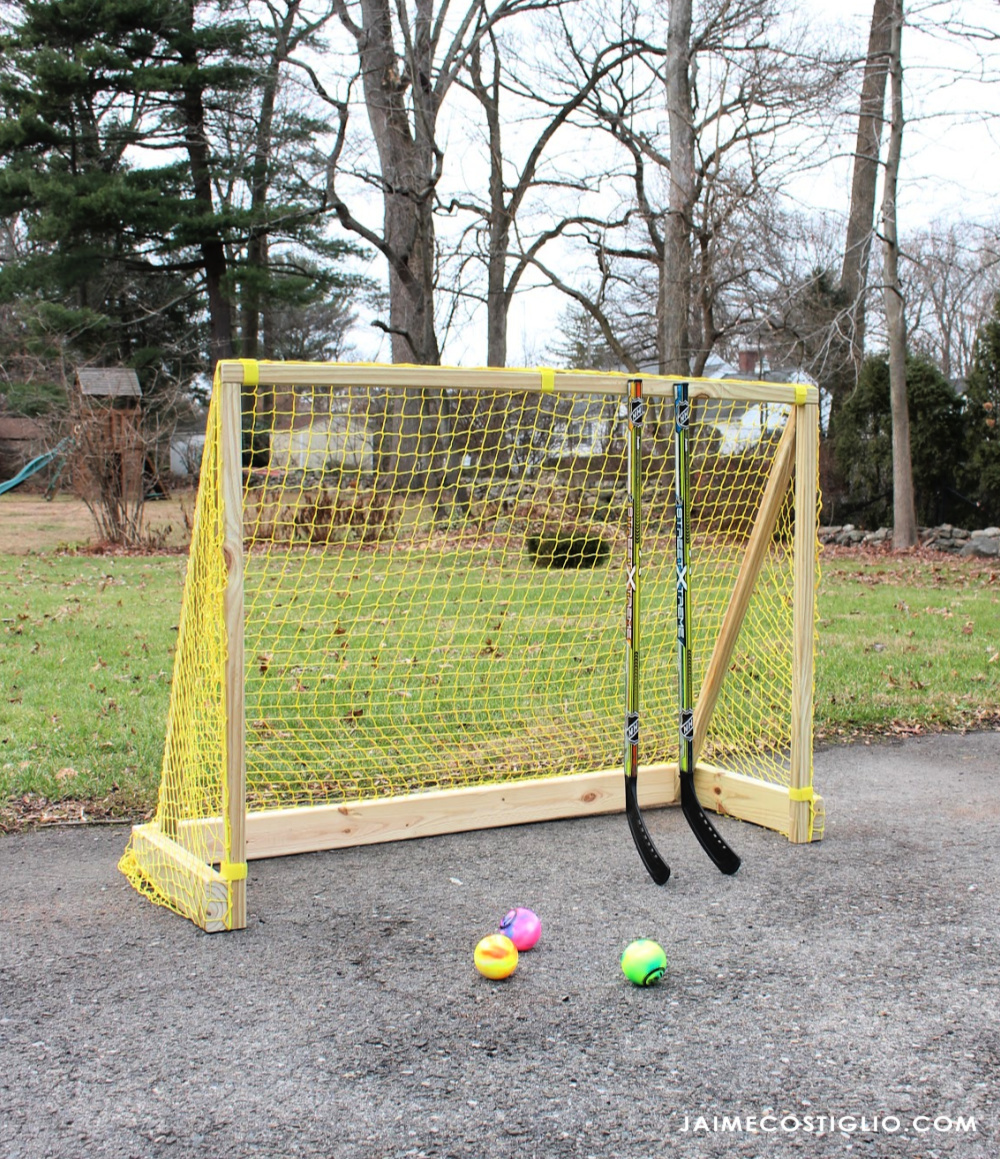
Make your own street hockey, lacrosse or soccer goal! Heavier than PVC so won't blow away in the wind, but inexpensive and easy to make! Free plans by ANA-WHITE.com
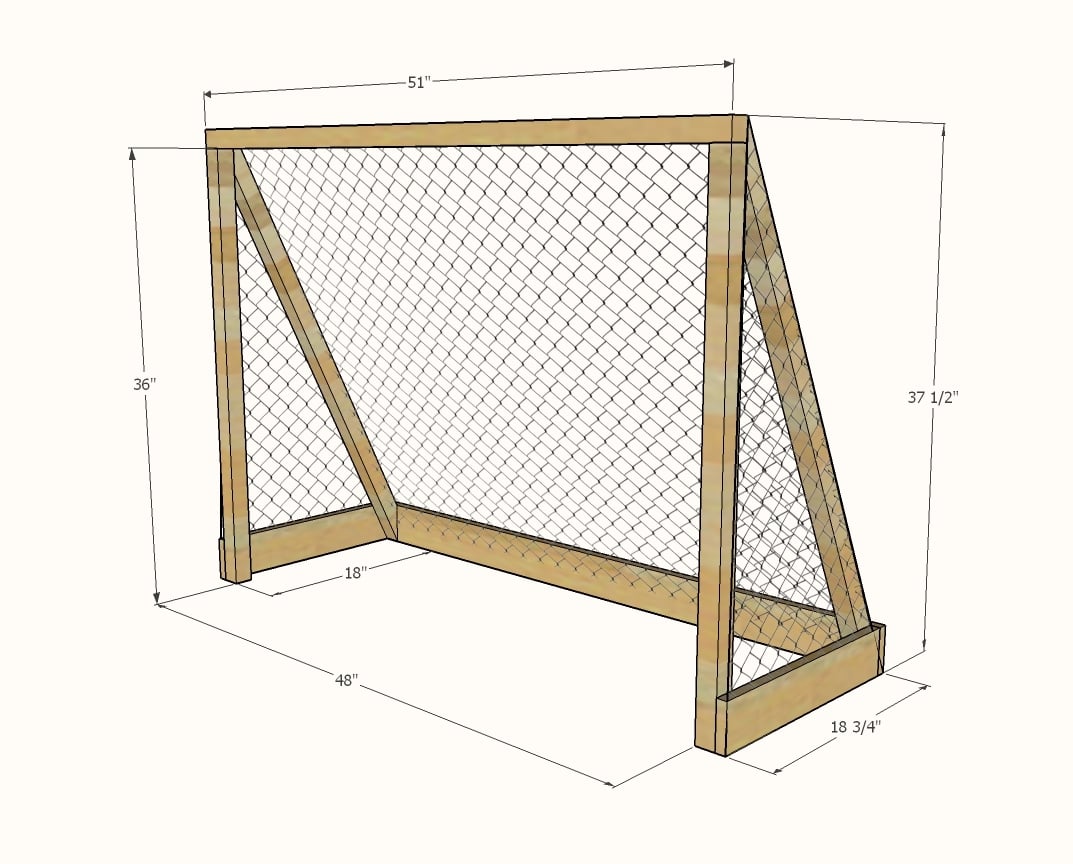
Preparation
INDOOR VERSION
1 - 1x4 @ 8 feet long
3 - 2x2 @ 8 feet long
1 - 1/4" and 2-1/2" pocket hole screws
Recommed Kreg Jig
OUTDOOR VERSION - Use outdoor appropriate materials
4 - 2x4 @ 8 feet or stud length
2-3/4" self tapping exterior screws
Does not need Kreg Jig
Can be made as shown with 1x4 and 2x2 or can be made with all 2x4s for exterior use (heavier and more durable). If for exterior use use treated or cedar or other outdoor appropriate materials.
1 - 1x4 @ 52-1/2" OR 2x4 @ 54"
2 - 1x4 or 2x4 @ 18"
2 - 2x2 or 2x4 @ 36"
1 - 2x2 or 2x4 @ 51"
2 - 2x2 or 2x4 @ approx 48" - cross piece, will be cut shorter
Instructions
Step 1
Step 2
INDOOR VERSION: Attach 2x2s together at top with 1-1/2" pocket holes and 2-1/2" pocket hole screws. Then attach 2x2 frame to 1x4 frame with 1-1/4" pocket hole screws, screwed through the 1x4s into the 2x2s from outside - 2 screws per joint.
OUTDOOR VERSION: Build the upper frame exactly as you did the lower frame in step 1 (but legs will be longer) using the 2-3/4" self tapping screws. Then attach to the lower frame at the bottom corner.


